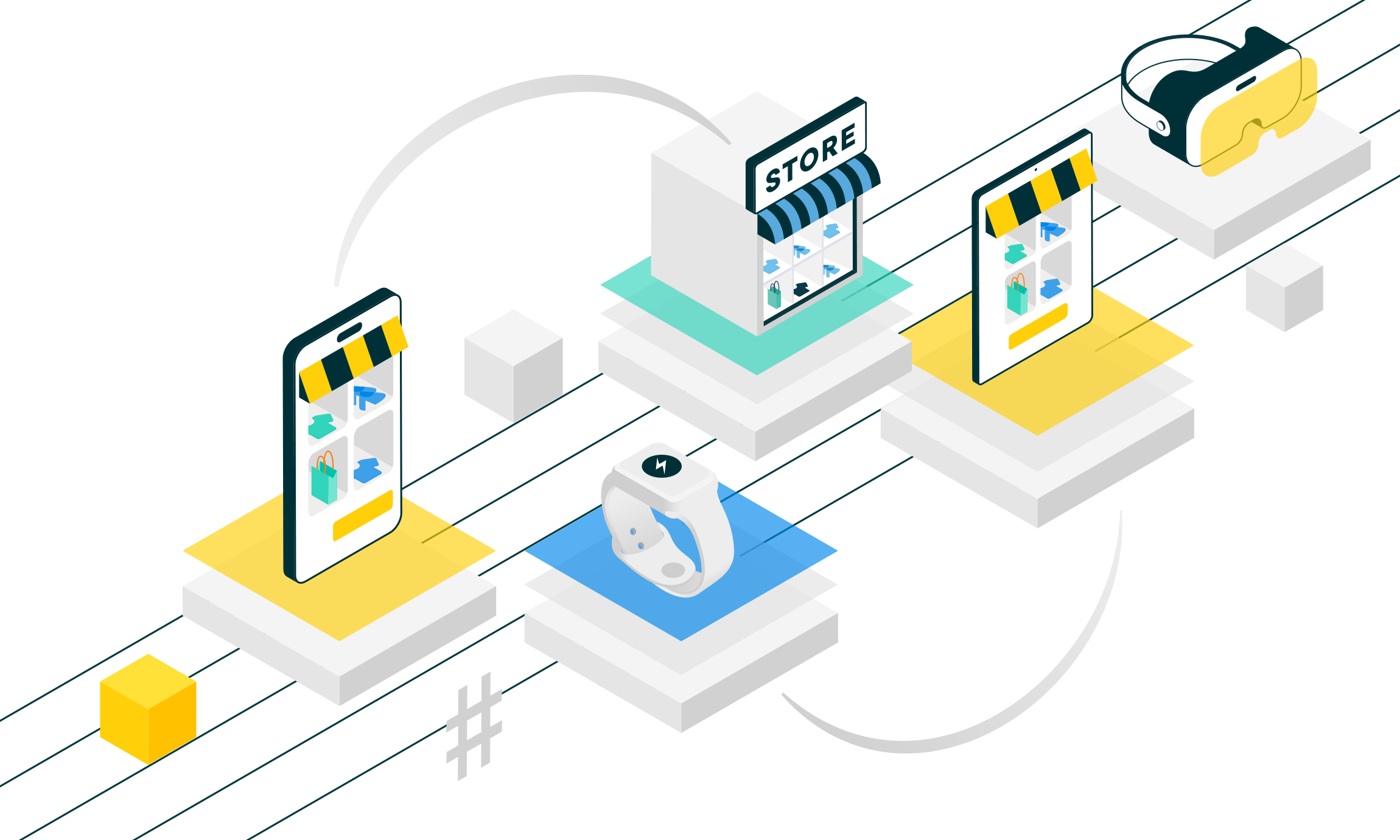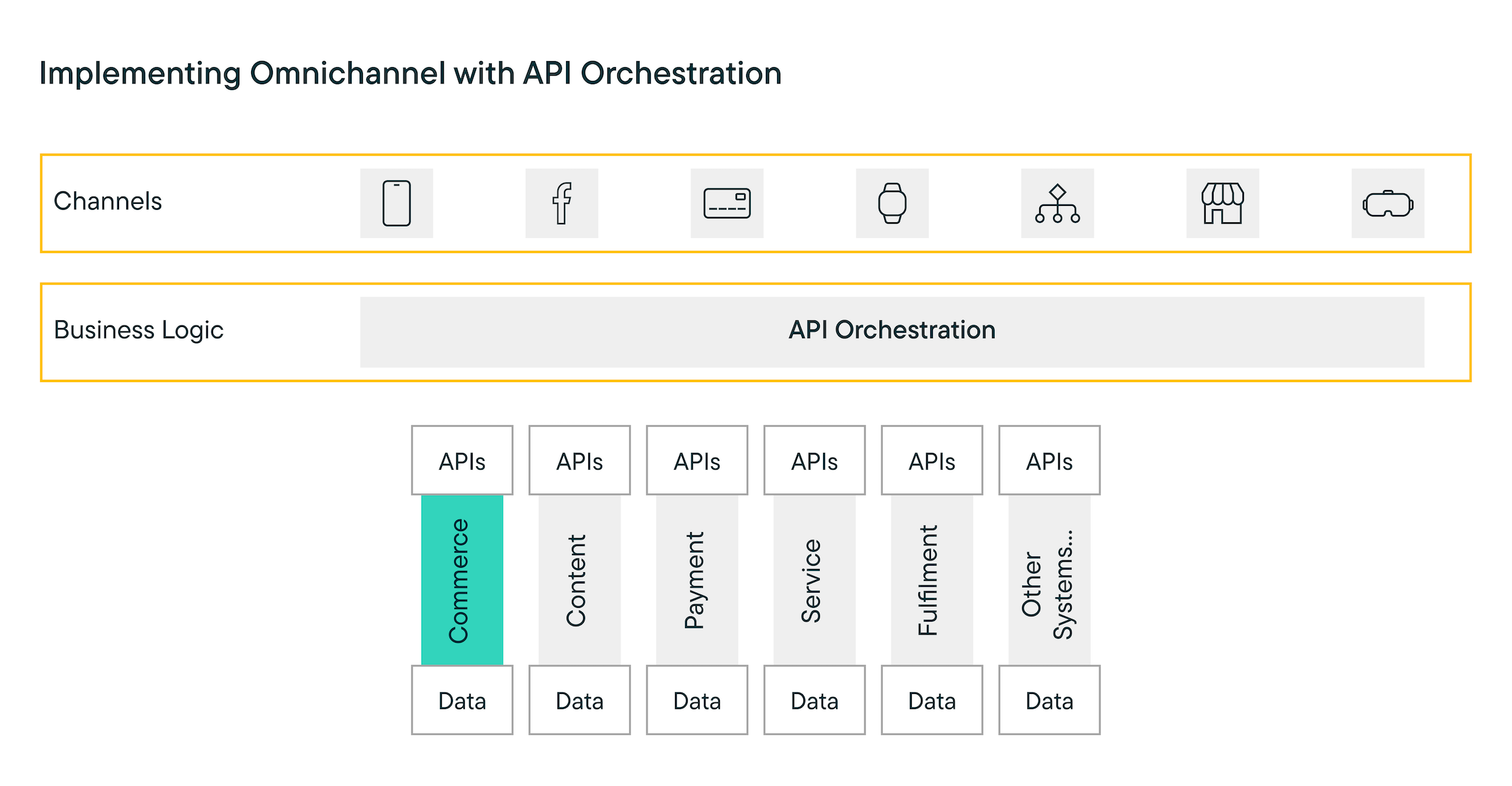
Consumers have been buying and engaging with brands with multiple channels for a long time. However, brands have been slow to match customer expectations with frictionless cross-channel experiences. So, how can brands bring omnichannel commerce to life? With a MACH® stack combined with an API orchestration layer, brands can deliver a cohesive experience in an easier, faster and low-risk fashion.

While there are many moving pieces to make omnichannel journeys successful (just like real-time inventory visibility and customer data), the most common FAQs in the omnichannel space are these: How can businesses orchestrate a seamless experience across many touchpoints? How can a company choreograph interactions when a consumer browses their website, then moves to the mobile app or social media, and buys the product in a brick-and-mortar store? It almost sounds like magic, doesn’t it?
Getting omnichannel right involves synchronizing customer interactions, content and processes across touchpoints, like when customers browse products on a brand's website and add items to their shopping cart. If they later switch to the brand's mobile app, it’s beneficial to enable the smoothest transition possible by synchronizing the cart contents, login status and browsing history, so customers can shop on the app without disruptions. With more than half of consumers engaging with three to five channels during each journey — and increasingly switching between digital and physical channels — it’s clear that brands need efficient solutions to optimize their omnichannel experiences.
The first step into a successful omnichannel approach starts with a modern API-based tech stack. To streamline processes further and reliably sync data between all backend systems (APIs) and channels, an API orchestration layer (also known as channel orchestration) is one of the preferred solutions. That way, you can simplify and speed up your omnichannel efforts. And while there’s nothing really magical about it, the results for your customer loyalty and sales figures may well turn out to be!
What’s an API orchestration layer?
Omnichannel experiences require each component to work in harmony — much like an orchestra playing a symphony. At the heart of omnichannel is coordinating data to create a single stream of information to deliver customers a consistent and cohesive experience.
In short, an orchestration layer is a central hub that connects to APIs and backend systems, orchestrating them toward all channels via one unified API. It acts as an intermediary between the different channels, enabling the synchronization of data, content, processes and actions across channels, making the flow of information and interactions seamless. This is where the APIs connect, ensuring a single data flow. Plus, you can design the workflows and add the business logic, so the APIs are programmed to communicate with one another according to different scenarios and customer engagement journeys.

This is how the orchestration layer functions in three steps:
Collect and consolidate data, processes and actions from various touchpoints, such as websites, mobile apps, social media and physical stores.
Harmonize and standardize data, processes and actions, ensuring consistency and accuracy across channels.
Facilitate the transfer of data, as well as processes and actions, between channels and backend systems, enabling real-time synchronization and updates.
Orchestrating channels with commercetools
Brands with omnichannel ambitions have different ways to orchestrate channels effectively. A typical route they take is to build their own orchestration layer from scratch to achieve maximum customization and fulfill business requirements. However, a pure build approach (like homegrown solutions) tends to become unstable over time, accumulate technical debt and run into high costs.
Instead of building your orchestration efforts, you can rely on commercetools to do this in two ways.
The first option is to utilize the API extension capabilities of commercetools Composable Commerce, which means an API-to-API communication stream. In that case, you need to add business logic to each API attached to each channel. While API extensions are a powerful tool, they are mainly focused on the commerce-related elements of the experience and, therefore, might not fulfill all needs in a complex omnichannel scenario.
The second option is an API orchestration layer placed between all backend APIs and all customer-facing channels. This layer unifies the multiple backend APIs making data, processes and actions available for any channel through just one API. commercetools Frontend (with its API-Hub), for instance, can orchestrate APIs, coordinating the communication flow between the web experience and all your other channels, as well as the commerce and non-commerce backend systems.
Aligned with commercetools Composable Commerce workflows, you can streamline API orchestration and the web frontend (desktop and mobile) composition and delivery process. The result? Your business can improve time-to-value and decrease operational IT effort and costs, bringing omnichannel commerce to life without friction.
Get to know all the principles for successful omnichannel experiences by downloading the Omnichannel Playbook.